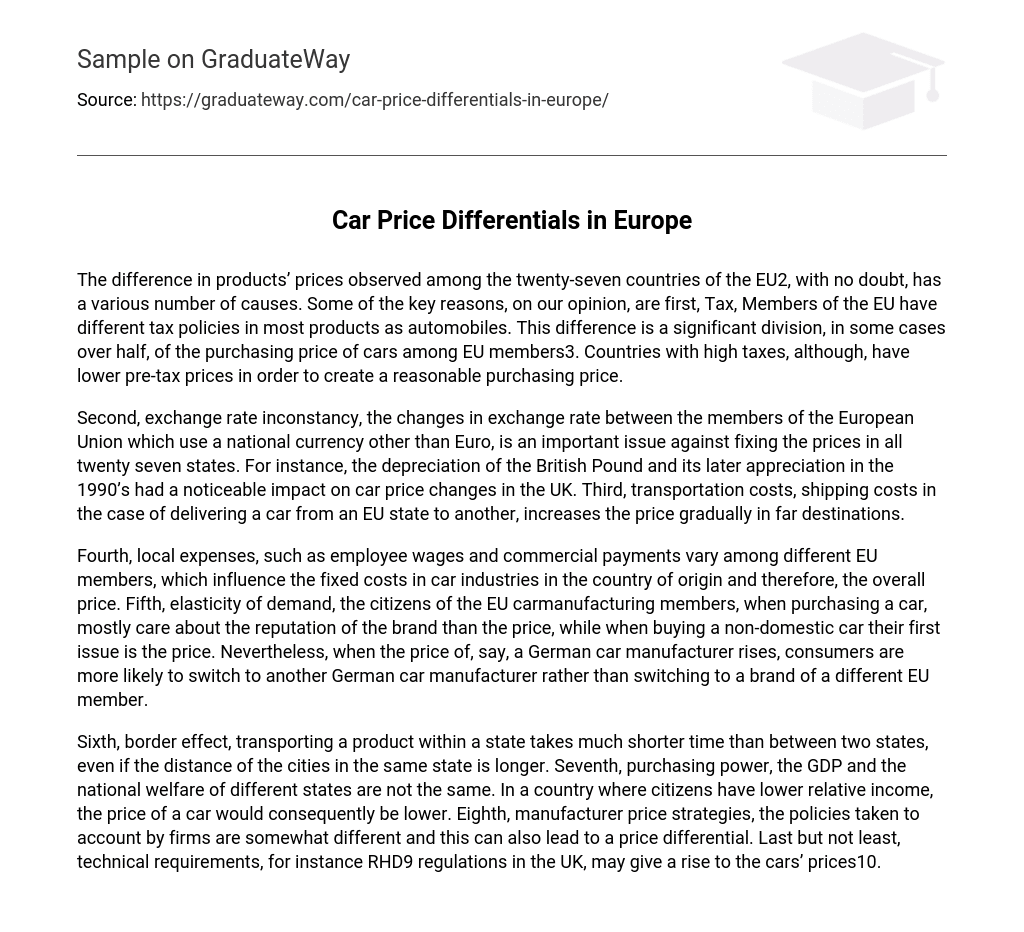The difference in products’ prices observed among the twenty-seven countries of the EU2, with no doubt, has a various number of causes. Some of the key reasons, on our opinion, are first, Tax, Members of the EU have different tax policies in most products as automobiles. This difference is a significant division, in some cases over half, of the purchasing price of cars among EU members3. Countries with high taxes, although, have lower pre-tax prices in order to create a reasonable purchasing price.
Second, exchange rate inconstancy, the changes in exchange rate between the members of the European Union which use a national currency other than Euro, is an important issue against fixing the prices in all twenty seven states. For instance, the depreciation of the British Pound and its later appreciation in the 1990’s had a noticeable impact on car price changes in the UK. Third, transportation costs, shipping costs in the case of delivering a car from an EU state to another, increases the price gradually in far destinations.
Fourth, local expenses, such as employee wages and commercial payments vary among different EU members, which influence the fixed costs in car industries in the country of origin and therefore, the overall price. Fifth, elasticity of demand, the citizens of the EU carmanufacturing members, when purchasing a car, mostly care about the reputation of the brand than the price, while when buying a non-domestic car their first issue is the price. Nevertheless, when the price of, say, a German car manufacturer rises, consumers are more likely to switch to another German car manufacturer rather than switching to a brand of a different EU member.
Sixth, border effect, transporting a product within a state takes much shorter time than between two states, even if the distance of the cities in the same state is longer. Seventh, purchasing power, the GDP and the national welfare of different states are not the same. In a country where citizens have lower relative income, the price of a car would consequently be lower. Eighth, manufacturer price strategies, the policies taken to account by firms are somewhat different and this can also lead to a price differential. Last but not least, technical requirements, for instance RHD9 regulations in the UK, may give a rise to the cars’ prices10.





